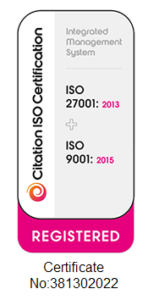Overcoming Fears as Medical Education Goes Virtual
“There are things known and there are things unknown, and in between are the doors of perception.” – Aldous Huxley
This week, I thought I would talk about the concerns that we are witnessing in the medical education arena.
While some meetings and conferences are being postponed until physical sessions can return, the show must go on with medical education.
Medical societies, alongside pharmaceutical companies, must continue to deliver the latest scientific data and clinical best practice to physicians by providing a platform for scientific exchange.
The engagement element is more important than ever in the virtual space. In the physical environment, you have a Chair overseeing the meeting and there is energy in the room. It is an engaging environment whether or not technology is used, and it is easy to tell whether the audience is listening.
In the virtual world, none of that is clear. Organisers are constantly wondering who is listening, who is making a cup of tea, who is loading the washing machine, and who is zoning out and sending emails!
Having a strong programme and finding creative ways to drive participation is imperative.
For example, try changing the parameters of the meeting to have shorter, more frequent meetings, so that instead of trying to get through 8 hours of content in a single day, audiences have multiple 1-hour or 2-hour sessions over several weeks.
Nevertheless, there is resistance to virtual events and that is borne of fear. In medical education, as I have said previously, you can’t afford to make mistakes, such as missing the final slide, not asking your delegates to complete their evaluation forms, or, most significantly, not engaging the audience.
One of the biggest fears is that the presenter’s internet connection goes down. How do you deal with that situation when you have potentially 1,000 viewers and no presenter? To address that possibility, a lot of companies have reverted to pre-recording through a ‘Record as live’ technique, where the session is recorded but released as though it is live.
Beyond the approval obstacles, a perhaps more serious issue with pre-recording – particularly when it comes to medical education – is how to get audience engagement and demonstrate their participation? Without that participation, you can’t demonstrate a platform of 2-way scientific exchange, so you’re not meeting the requirements of a medical education meeting.
Creative thinking and industry knowledge
That is where knowledge, experience and creative thinking come to the fore. So, I might tell a client that while I understand the point of pre-recorded sessions from the speakers, let’s make the Q&A live and have a live Chair introduce the speakers as if they were there.
At its most simplistic, the Q&A would be a tick-box session to demonstrate scientific exchange. However, I’d argue that this is not what the doctors are looking for and it isn’t truly engaging. We have developed technology that gives everyone in the virtual room a voice during the Q&A.
We can identify those wanting to ask a question and allow them to submit their question. In some ways, this can be less threatening for delegates who perhaps don’t feel confident about putting their hands up or speaking in front of an audience, whether in a live or a virtual meeting.
Companies and their medical communications agencies also need to consider the evaluation questions carefully when thinking about meetings in a virtual format. For example, doctors are typically asked: “Is this content going to have an impact on your everyday activities?” or “How relevant is this education to your patients?”
Those are questions you want your audience to be thinking about when the speaker is presenting. And that is where you need to rethink how and when you pose those questions. You might have the facilitator introduce a poll before introducing the speaker and their topic, to build the level of participation, even if the speaker’s address is pre-recorded.
This is a steep learning curve for not only pharmaceutical companies but also medical communications agencies. Everyone is adapting, but everyone is scared of the unknown as virtual becomes the only way to communicate, especially the medical communications agencies. Everyone wants to go back to live events because that is what they are comfortable with.
I understand that trepidation, but the virtual world is not really that different from a face-to-face event. Things can and do go awry in face-to-face meetings – the audio-visual company doesn’t turn up, your printed materials haven’t arrived, your speaker runs over time.
What gets you through these situations is experience – people who are experts in their field, who understand the industry, who are able to think creatively and strategically and who can help to steer any session to avoid the pitfalls.
If you want to know more, have a discussion, or to receive case studies please get in touch with me.
Pedro Malha is Commercial Director at Open Audience, an audience engagement consultancy that specialises in making life sciences meetings more engaging with more positive, successful outcomes – whether in-person or in the virtual space. The Open Audience team helps to strategise and prepare pre- and post-meeting as well as providing real-time support and guidance during the meeting. Open Audience also offers customisable, multilingual engagement platforms that include interactive polling, surveys, and ideas exchange.

